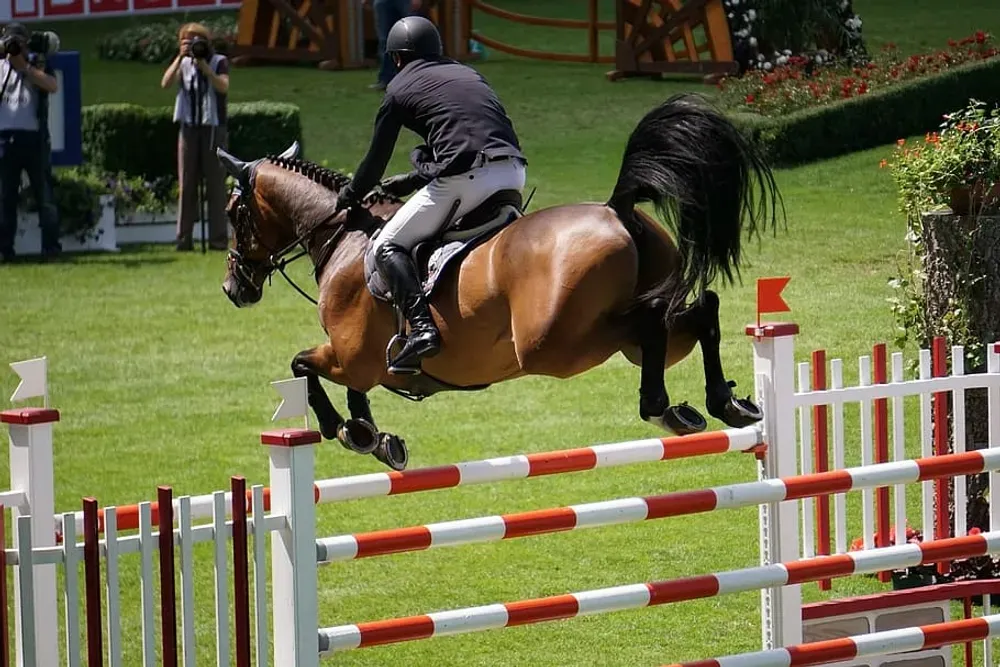
Table of Contents
Where is my horse's stifle joint?
The stifle joint is the horse's equivalent to a human knee. It is the joint where the tibia and femur bones meet and is the most complex joint in a horse's body consisting of three interlocking joints. The patella (knee cap) permits the joints to move like a hinge with extension and flection but without sideways movement.
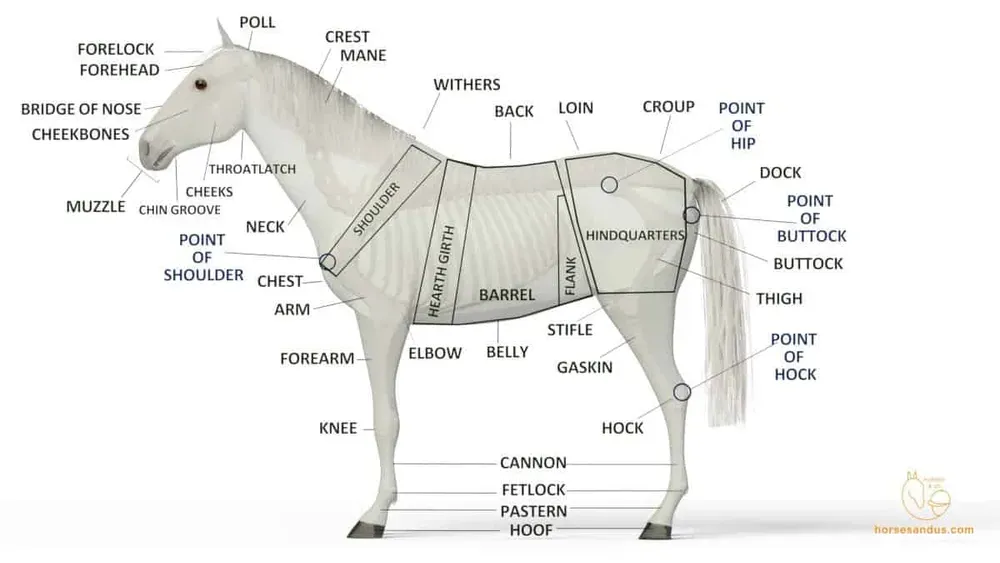
The location of the stifle
This complexity of joints is found at the top of the gaskin area.
Is my horse likely to develop a stifle injury?
Any horse can injure a stifle but the injury is more common in certain activities. These activities are where a horse has to make sudden stops or quick changes in direction or travel at speed and jump. High-level dressage horses are also susceptible because they are required to really engage their hindquarters. Here is a list of equine activities closely associated with stifle injury:
- High-level dressage where the horse carries more weight through its quarters.
- Eventing where the horse is jumping and turning at speed.
- Polo, barrel racing, reining and cutting, as all involve stopping/starting and turning at great speed.
- Anything that strains the stifle like excessive lunging or overjumping a horse.
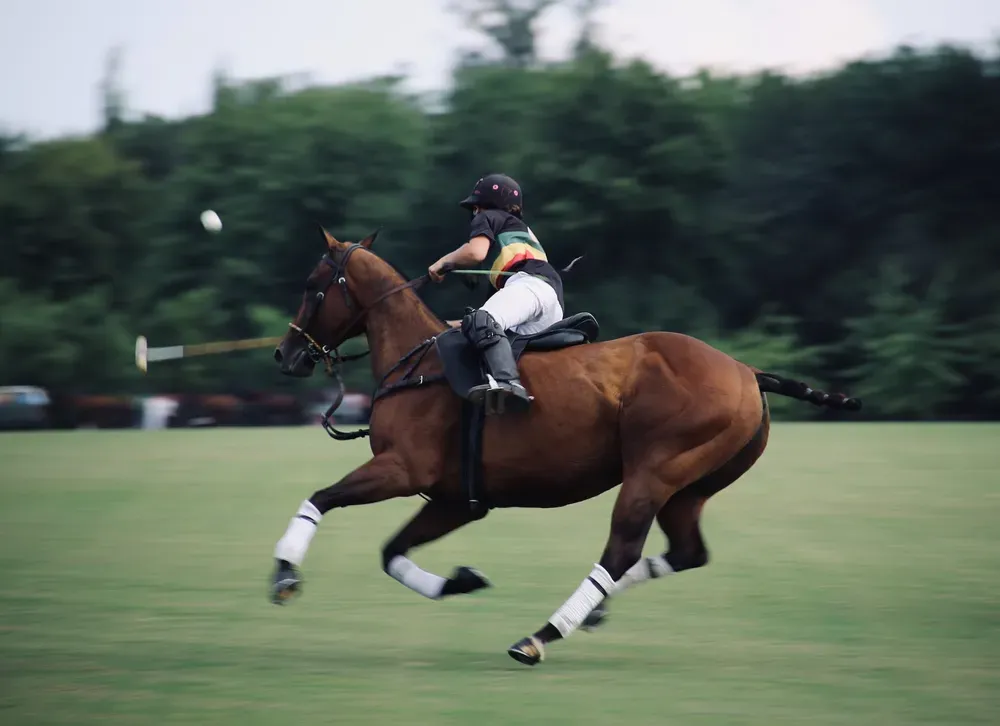
Stifle joint injuries
This polo pony is performing with rapid acceleration and turning at fast speeds so he is prone to stifle injuries.
A horse's conformation also affects the likelihood of stifle injury. In particular, straight hind limbs and rear feet with low heels and long toes are prone to damage. In addition, fast-growing horses with an inclination to develop OCD are more susceptible to stifle lameness caused by the formation of bone cysts.
The options for a horse with stifle injury will depend on the cause but the following are available.
- Joint supplements
- Joint injections
- Physical therapy
- Surgery
How do I know my horse has a stifle injury?
The signs of stifle lameness will vary from horse to horse. and in addition, a sore back often accompanies stifle lameness. The first thing to look for is tenderness and swelling in the stifle region and more frequent resting of the affected leg. You will probably have noticed some changes to your horse's ridden behaviour such as:
- A rough canter or problems transitioning between trot and canter.
- Drifting to one side over jumps to relieve pressure on the other hind leg.
- Reluctance to back up.
- Resistance to crossing the back legs when asked to circle around a point.
- Inability to perform an advanced dressage movement that was hitherto a regular part of training.
When stifle lameness is suspected your vet will perform a hind leg flexion test to identify the lame leg and then nerve-block the three stifle joints so that this can be formally identified as the problem area.
Do you know how nerve blocking works?
If an unsound horse becomes sound when nerves are blocked in a certain area this means the area causing the lameness has been located. This is because blocking the nerves has taken away the pain.
How do I help protect my horse from developing stifle lameness?
- Make sure your horse is gradually made fit for its intended purpose and always keep him slim.
- Avoid repetitive stress injuries caused by overdoing exercises (eg. reining, jumping and dressage) that stress the back end of a horse.
- Only use your horse for activities that suit its body shape and conformation.
- Provide the correct nutrition and if required joint supplements.
Here is an exercise you can use to strengthen your horse's back, quads, and abdomen!
Stand at your horse's hip hip and pull his tail until you feel resistance. Hold the pull for about 10 seconds and release. Repeat 5 to 10 times on each side.
OK, so what stifle injury can my horse have?
A vet will use an X-ray or ultrasound to detect the exact problem. X-rays will detect arthritis, bone cysts and fractures, while ultrasound will detect soft tissue damage to muscles and ligaments. The treatment will be different depending on the problem found so we need to look at this next.
This article does not look into locking stifles. For more about this condition follow the article suggestion given here.
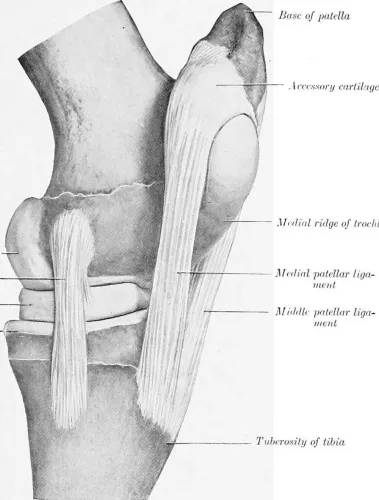
Article Suggestion
Locking Stifles: Problem Causes and SolutionsHow will my horse's stifle bone cyst be treated?
Bone cysts are combated through rest, joint injections and surgical removal. Foals and yearlings can develop bone cysts and some quickly recover with rest while others need medical procedures. However, affected adult horses become very lame and rest is not generally successful, particularly where arthritis is also present.
Cyst injections into the stifle joint involve injecting steroids, other drugs and bone substitutes into the cyst rather than removing the cyst. This can be effective as it permits the area of weak bone to heal and return to a pre-damaged form. Debriding the cyst lesion and then packing them with bone substitutes and bone marrow, which contains a large number of stem cells is now considered a good option for many horses.
What is the difference between a bone cysts and OCD?
OCD is a bone chip and this will be found in the gliding part of a joint. However, a bone cyst is made from weak cartilage and bone and is found on the weight-bearing part of a joint.
How will my horse's arthritic stifles be treated?
Older horses can develop arthritic stifle joints, which is often secondary to an established long-term stifle injury. For example, injured collateral or cruciate ligaments are not easily treated and cause instability within the joint, long-term lameness and arthritis. Furthermore, arthritis can cause bone cysts on the weight-bearing parts of the joint.
Supplements, anti-inflammatories and joint injections are used for arthritic stifles but the results are not always effective. A return to soundness is not likely in these situations. Nevertheless, a natural anti-inflammatory (IRAP) extracted from the horse's blood is now being used to combat osteoarthritis and early reports about its effectiveness are encouraging.
How will my horse's stifle fracture be treated?
Fractures of a horse's stifle are caused by direct trauma and can be life-threatening depending on the severity and location in relation to supporting ligaments and muscles. There are four areas where fractures can be treated and these are the patella, tibial tuberosity, and femoral ridges.
Patella Fracture
The prognosis for these injuries is dependent on the fracture location in relation to exterior muscles and ligaments that have a pulling effect on the joint. however, less severe and nonarticular fractures may quickly heal. Management with these less severe fractures is treated through box rest and there is a good chance of total rehabilitation.
The treatment for fractures requiring internal fixation is the hardest where the forces of moving ligaments and muscles act against the healing process.
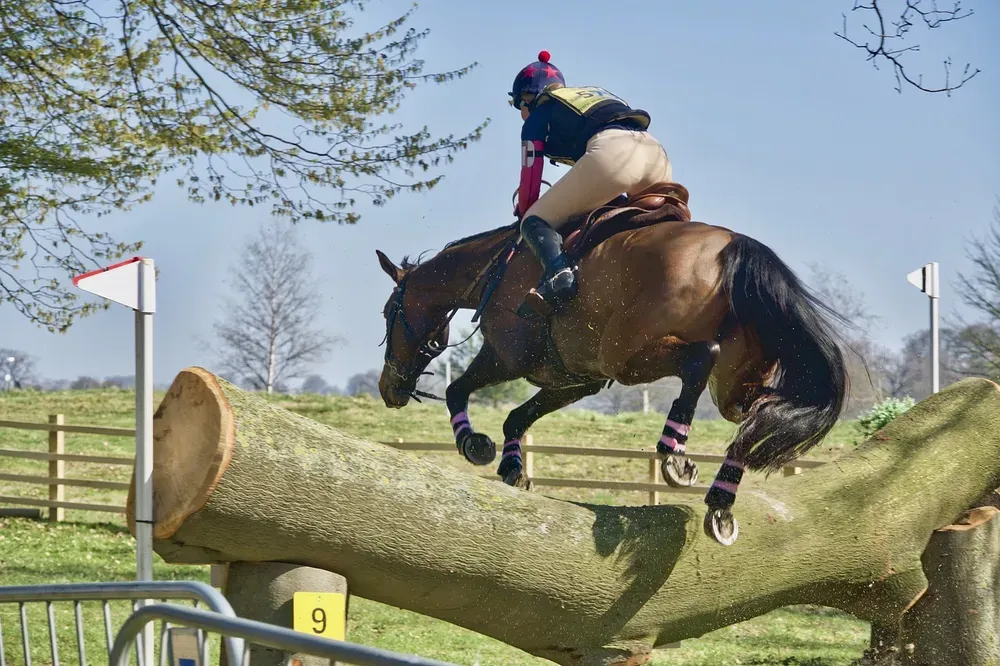
Eventing horses are prone to stifle fractures
Impacting with a solid jump is a potential cause of stifle fractures. The prognosis can range from euthanasia to full recovery depending on the location and severity of the injury.
Tibial tuberosity fractures
Small nondisplaced fractures generally heal with stable rest for 6 to 8 weeks but the horse must be kept on its feet for the first few weeks to avoid bone displacement. However, a large articular fracture will require internal fixation. The good news is, these fractures generally have a good prognosis for a full recovery
Femoral ridge fractures
Treating fragmentation of these ridges involves removing the displaced fragments. The prognosis for a full recovery is best when there is no accompanying soft tissue damage.
How will my horse's soft tissue stifle lameness be treated?
Twisting and shearing forces to the horse's back leg can cause the meniscus to tear and/or the attached ligament. The collateral ligaments can also be damaged by severe trauma caused by a trapped foot and other stifle ligaments can be damaged.
Meniscus tearing ranges from a painful tear to insignificant fraying. Some tears can be accessed surgically and then the frayed area can be debrided or the meniscus can be sutured together. If the injury is under the condyle bone it cannot be accessed and a return to soundness is less likely. Injuries to the meniscus do not easily respond to rest and anti-inflammatory drugs. However modern advances in stem cell therapy are healing these types of injuries. and often the best chance of affecting a return to work is a combination of surgery and stem cell therapy. Torn ligaments are treated with rest, anti-inflammatory drugs and if the damaged area is accessible stem cell therapy. Bady torn ligaments do not heal well and a return to soundness is difficult.
The hormone estrogen can be injected into the stifle to improve ligament tension and joint stability. Platelet-rich plasma (PRP) extracted from the horse's blood (PRP) is also used to promote healing.
The take-home message
Stifle injuries are not always easy to successfully treat. A horse recovering from a significant stifle lameness must have a full rehabilitation package as directed by a vet and the exercise programme must be built up very slowly. It is advisable to avoid horse walkers, lunging, circling, steep slopes and deep going to prevent overstressing the stifle joint.
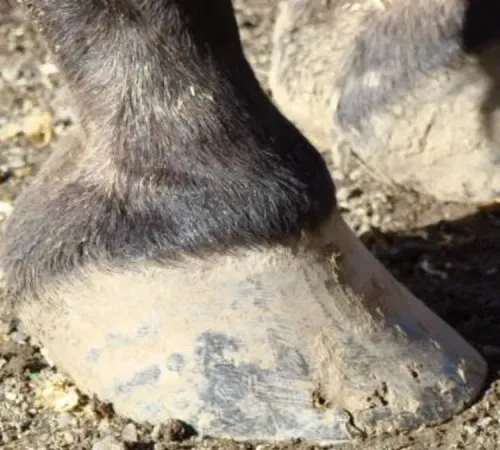
Article Suggestion
A Snapshot – Low Heels and Horse Soundness
